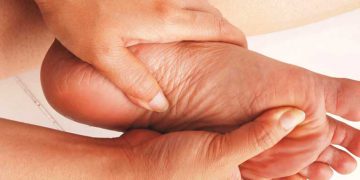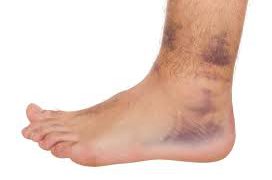Diabetes mellitus is a chronic disease characterized by relative or absolute deficiency of insulin, resulting in glucose intolerance. It occurs in 4-5 million persons in the United States (approximately 2% of the population). The classic symptoms of diabetes mellitus result from abnormal glucose metabolism.
The lack of insulin activity results in failure of transfer of glucose from the plasma into the cells. This situation so called “starvation in the midst of plenty”. The body responds as if it were in the fasting state, with stimulation of glucogenolysis, gluconeogenesis and lipolysis producing ketone bodies.
The glucose absorbed during a meal is not metabolized at the normal rate and therefore accumulates in the blood (hyperglycemia) to be excreted in the urine (glycosuria). Glucose in the urine causes osmotic diuresis, leading to increase urine production (polyuria). Stimulation of protein breakdown to provide amino acids for gluconeogenesis results in muscle wasting and weight loss.
These classic symptoms occur only in patients with severe insulin deficiency, most commonly in type I diabetes. Many patients with type II diabetes do not have these symptoms and present with one of the complications of diabetes.
Generally, there are two types of diabetes: Type I Diabetes Mellitus (insulin- dependent diabetes mellitus, IDDM) and Type II Diabetes Mellitus (non-insulin- dependent diabetes mellitus, NIDDM).
Type I Diabetes Mellitus (insulin- dependent diabetes mellitus, IDDM) is due to destruction of pancreatic B cells. The cause of B cell destruction in type I diabetes is unknown. A few cases have followed viral infections, most commonly with coxsakievirus B or mumps virus.
Autoimmunity is believed to be the major mechanism involved. Islet cell autoantibodies are present in the serum of 90% of newly diagnosed cases. Such antibodies are directed against several cell components, including cytoplasmic and membrane antigens or against insulin itself (IgG and IgE antibodies). Sensitized T lymphocytes with activity against B cells have also been demonstrated in some patients.
Plasma insulin levels are very low or even absent in type I diabetes, and ketoacidosis develops if the patients do not receive exogenous insulin. Type I diabetes occurs most commonly in juveniles, with the highest incidence worldwide among the 10- to 14-year-old group, but occasionally occurs in adults, especially the nonobese and those who are elderly when hyperglycemia first appears.
The etiology of type II diabetes mellitus (non-insulin- dependent diabetes mellitus, NIDDM) is even less clearly understood. Two factors have been identified:
a) Impaired insulin release-basal secretion of insulin is often normal, but the rapid release of insulin follows a meal is greatly impaired, resulting in failure of normal handling of a carbohydrate load. In most patients, some level of insulin secretion is maintained, so that the abnormality of glucose metabolism is limited and ketoacidosis is uncommon. In these patients, insulin secretion can be stimulated by drugs such as sulfonylureas.
Exogenous insulin is therefore not essential in treatment. It also have been suggested that inheritance of a defective pattern of insulin secretion is responsible for the familial tendency of diabetes. The genetic factor is very strong in type II diabetes, with a history of diabetes present in about 50% of first degree relatives.
b) Insulin resistance-a defect in the tissue response to insulin is believed to play a major role. This phenomenon is called insulin resistance and is caused by defective insulin receptors on the target cells. Insulin resistance occurs in association with obesity and pregnancy. In normal individuals who become obese or pregnant, the B cells secrete increased amounts of insulin to compensate. Patients who have genetic susceptibility to diabetes cannot compensate because of their inherent defect in insulin secretion.
Thus, type II diabetes is frequently precipitated by obesity and pregnancy. In a few patients with extreme insulin resistance, antibodies against the receptors have been demonstrated in plasma. These antibodies are mostly of the IgG class and act against the insulin receptors, causing the decreased numbers of insulin receptors and defective binding of insulin to receptors.
Other specific types of diabetes mellitus includes maturity-onset diabetes of the young (MODY), diabetes due to mutant insulin, diabetes due to mutant insulin receptors, diabetes mellitus associated with a mutation of mitochondrial DNA and obese type 2 patients.
Reference:
Written by: Wong Lai Teng



















